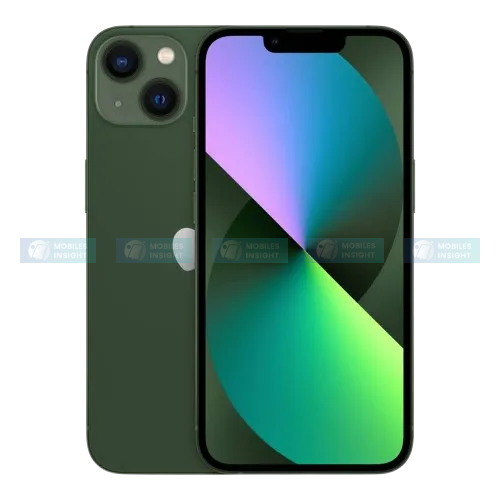
6G Chips for the Next Era of Smartphones and IoT Devices
The next step in mobile connectivity is 6G, which can reach speeds up to 1 terabit per second and very low delay of just 1 microsecond. This is made possible by advanced chips like Qualcomm's Snapdragon 8 Elite and MediaTek's Dimensity 9400, built using the latest 3nm technology. These chips have AI processing, edge computing, and support new features like holographic calls and self-driving systems. The 6G network will allow devices to work together smoothly, from smartphones to IoT sensors. With commercial use expected around 2030, 6G chips will change how we use mobile and connected devices.
The Leap from 5G Networks to 6G Chips
While 5G networks brought faster speeds and lower latency, 6G chips are set to change the future of wireless communication. These chips do more than just transfer data. They combine AI-powered computing, edge processing, and terahertz communication to create smart, autonomous systems that can make decisions in real time.
AI-Powered Intelligence at the Edge
A major improvement in 6G technology is putting AI directly into the chips. Researchers at MIT have created a photonic AI hardware accelerator specifically for wireless signal processing. This optical processor can perform machine learning calculations at the speed of light, identifying wireless signals in just nanoseconds. It is about 100 times faster than current digital chips while maintaining over 95% accuracy. Its small size, low energy use, and scalability make it ideal for real-time data analysis, with uses in areas like self-driving cars and medical devices.
AI-based edge computing also allows low-latency processing and instant analytics. This means applications like autonomous vehicles and smart medical implants can work quickly without relying heavily on central cloud servers, making 6G networks more responsive and efficient.
Terahertz Communication: Unlocking Superfast Speeds
6G chips are built to work across a very wide frequency range, from 0.5 GHz to 115 GHz. Previously, covering this range required nine separate radio systems. With 6G chips, all these frequencies can be used together, making data transfer much faster. This will allow things like real-time holographic calls and immersive augmented reality experiences.
Working in the sub-terahertz and terahertz bands, 6G systems will provide huge bandwidth for lightning-fast wireless communication and data transfer. But using this spectrum comes with challenges, such as signal loss and the need for advanced antenna technology.
Autonomous and Secure Real-Time Operation
6G chips are more than just an upgrade from 5G. They are designed to handle very high-frequency signals beyond 100 GHz. These chips can connect, analyze, and adapt on their own in real-time.
AI-powered 6G networks will be able to optimize themselves, predicting and responding to network needs instantly. This is important for applications that need extremely low delay and high reliability, like remote surgery and self-driving vehicles.
Inside the Architecture of 6G Chips
6G chips are built to work with very high frequencies. They use the terahertz spectrum (100 GHz to 1 THz) for super-fast wireless connections. This helps new technologies like holographic calls, instant-touch internet, and ultra-HD immersive videos.
AI is built right into the chips. Instead of sending everything to the cloud, 6G chips can run AI locally. This makes devices faster and keeps your data private. Edge computing is also part of the chip, so devices can make decisions immediately without relying on faraway servers.
Security is stronger than ever. 6G chips will have quantum-resistant encryption to stop hackers using future quantum computers. They also use a decentralized system, so authentication doesn’t depend on a single server.
How Will 6G Chips Transform Smartphones?
Smartphones with 6G chips will feel like smart assistants, not just regular phones. They will support high-resolution holograms, real-time language translation, and tools that connect directly to the brain. These are real developments. Samsung and Nokia are already testing them.
Mobile cameras will use 6G chips for live 3D video sharing. Imagine streaming an AR concert where you can walk around the stage virtually. Gaming will improve too, with instant graphics calculated on your phone using terahertz-powered chips.
Battery life will stay strong even with these heavy tasks. 6G chips are designed with energy-efficient cores. Qualcomm’s early prototypes show about 30% less energy use per task compared to the current Snapdragon 8 Gen 3.
IoT Devices Powered by 6G Chip Technology
IoT devices will depend a lot on 6G chips. Smart cities need millions of sensors to work together at the same time. 6G chips can let one square kilometer have 10 million devices without slowing down.
Medical IoT is very important. Devices like pacemakers and insulin monitors will use 6G chips to track health in real time. Instead of telling doctors hours later, alerts happen instantly, saving lives.
Industrial IoT will also improve. Factory robots can share data instantly and adjust production without stopping. Farmers in Bangladesh could use 6G drones to check crops, find diseases early, and save water.
Satellite Connectivity and 6G Chips: Expanding Global Reach
One big improvement with 6G chips is built-in satellite connectivity. Unlike 5G, which requires extra hardware, 6G chips will let smartphones and IoT devices connect directly to low-earth-orbit satellites.
This is very important for Bangladesh. People in remote areas with few mobile towers will finally get real internet. Fishermen in the Bay of Bengal can stay connected while at sea. Emergency services during cyclones can have reliable communication thanks to 6G chips.
Companies like Apple, Huawei, and Qualcomm have already tested direct-to-satellite prototypes. With 6G chips, this feature will become standard, not just a premium option.
The Race Among Global Chipmakers for 6G Leadership
The global race for 6G chips is getting faster as tech companies and research institutes work hard to shape the next generation of wireless technology. Here’s a closer look at the major players and their latest progress:
Qualcomm: Leading with AI and Terahertz Chips
Qualcomm is at the forefront of 6G development, focusing on terahertz (THz) frequencies and AI-powered system-on-chip (SoC) designs. At MWC 2024, the company demonstrated point-to-multipoint communication at 140 GHz, moving closer to sub-THz prototypes. Qualcomm also explains how 6G and AI will improve user experiences, making interactions smarter and more context-aware.
Samsung: Achieving High-Speed 140 GHz Communication
Samsung, together with the University of California, Santa Barbara, sent data at 6.2 Gbps over 15 meters indoors using 140 GHz and 2 GHz bandwidth. This shows that 6G can bring ultra-fast, low-latency connections soon.
Huawei: Combining Satellites and Mobile Networks
Huawei is working on Very-Low-Earth-Orbit (VLEO) satellites to improve 6G coverage, linking satellite and mobile networks smoothly. Their goal is to combine sensing with communication to create digital twins of the real world. Huawei is also leading in 6G patents, showing its focus on advanced technology.
MediaTek: Making 6G Affordable
MediaTek wants 6G to reach emerging markets by making cheaper chips that combine satellite and mobile networks. Their goal is to provide global connectivity and open the door to new digital services.
Hexa-X-II: Europe’s 6G Project
The European Union’s Hexa-X-II project, led by Nokia and Ericsson, is working to build a sustainable and reliable 6G platform. It includes 44 partners like device makers, chipset companies, research institutes, and telecom operators.
6G Horizon: More Than Speed
6G aims for data speeds of up to 1 terabit per second, but its real potential is in using AI agents, real-time network slicing, and providing wide coverage through advanced satellite and mobile networks.
6G Chip Security: Tackling Quantum and AI Threats
With more devices connecting every day, security risks are also growing. 6G chips use post-quantum cryptography, which keeps your communications safe even if someone has a powerful quantum computer.
These chips also have AI-based security. They can detect and stop suspicious activity right on the chip instead of waiting for server alerts. This makes financial transactions, healthcare data, and IoT devices much safer.
In Bangladesh, bKash users and the financial sector will benefit. Transactions will be faster, and the chances of fraud will be lower.
Energy Efficiency: Making 6G Sustainable for Billions of Devices
With billions of devices connected, using energy efficiently is very important. 6G chips are being made with eco-friendly designs. New types of transistors reduce wasted power, and AI helps the chips use energy only when needed.
Telecom experts are aiming for 100 times better energy efficiency than 5G. This is important not only for smartphones but also for IoT devices that run on small batteries in rural Bangladesh or in smart cities around the world.
6G Chips and Emerging Markets: A Bangladesh Perspective
Bangladesh is not just a market for buying technology. The country is getting ready for 6G with help from telecom companies and universities.
6G chips in smartphones will bring better internet to rural areas. Farmers can use smart tools for modern farming. Doctors can check on patients from far away. Students can enjoy interactive classrooms with AR using terahertz chips.
The cost of 6G devices is still high. But with MediaTek and Unisoc making cheaper 6G chips, more people in Bangladesh will be able to use them. Government support will also be important to make sure local telecom companies adopt 6G networks.
The Role of Governments and Research Alliances
The race to develop 6G technology is not just about technical skills but also about global strategy. Governments and international research alliances are leading the way, guiding 6G chip development with investments, collaborations, and national missions.
🇪🇺 EU Hexa-X-II Project: Building Sustainable 6G Systems
The European Union’s Hexa-X-II project focuses on creating a sustainable and reliable 6G network. It aims to design a complete system that combines various technologies, ensuring energy efficiency and strong performance. The latest report, D5.5, gives detailed insights into 6G devices and technology.
🇯🇵🇺🇸 Japan and US Collaboration: Strengthening Semiconductor Technology
Japan and the United States are working together to improve semiconductor technology. Japan’s Rapidus project plans to produce advanced 2nm chips. Japan is also partnering with US AI chip startup Tenstorrent to train engineers in AI chip design using RISC-V technology. These efforts show how important semiconductor innovation is for 6G.
🇨🇳 China’s 6G Test Satellites: Testing Terahertz Communication
China launched its first 6G experimental satellite, Tianyan-5, to test terahertz communication in space. This step is part of China’s plan to become a leader in next-generation wireless technologies and 6G development.
🇮🇳 India’s Bharat 6G Mission: Promoting Self-Reliance in Chips
India’s Bharat 6G Mission aims to make the country a 6G leader by 2030. It focuses on affordability, sustainability, and wide coverage. India plans to launch its first domestically made semiconductor chip by the end of 2025, using 28 to 90-nanometer technology. This will help India reduce dependence on foreign chip makers and build its own semiconductor ecosystem.
🇧🇩 Bangladesh: Joining the 6G Journey
Bangladesh is working to strengthen its role in the regional 6G ecosystem through partnerships. The country is open to collaborating with neighbors like China and India, focusing on infrastructure and technology exchange. This approach will help Bangladesh be an active participant in 6G development instead of just a user.
Final Thoughts
6G chips are a big step in digital technology. They combine communication, intelligence, and security in one system. Smartphones will become smart helpers in our daily lives. IoT devices will change industries, healthcare, and education.
For Bangladesh, 6G chips can help close the digital gap. Affordable 6G smartphones will connect remote villages, help students learn, and make financial systems safer.
The chip is no longer just a small part inside a device. They are the engine of our future. Whoever leads in 6G chips will shape the next era of technology.
Popular Phone Reviews

Samsung Galaxy A70 Review: Features, Performance, and Value Insights

Apple iPhone 16 Pro Max Review: Features, Performance, and Value Insights

Apple iPhone 12 Pro Max Review: Features, Performance, and Value Insights

Xiaomi Redmi 12 Review: Features, Performance, and Value Insights






